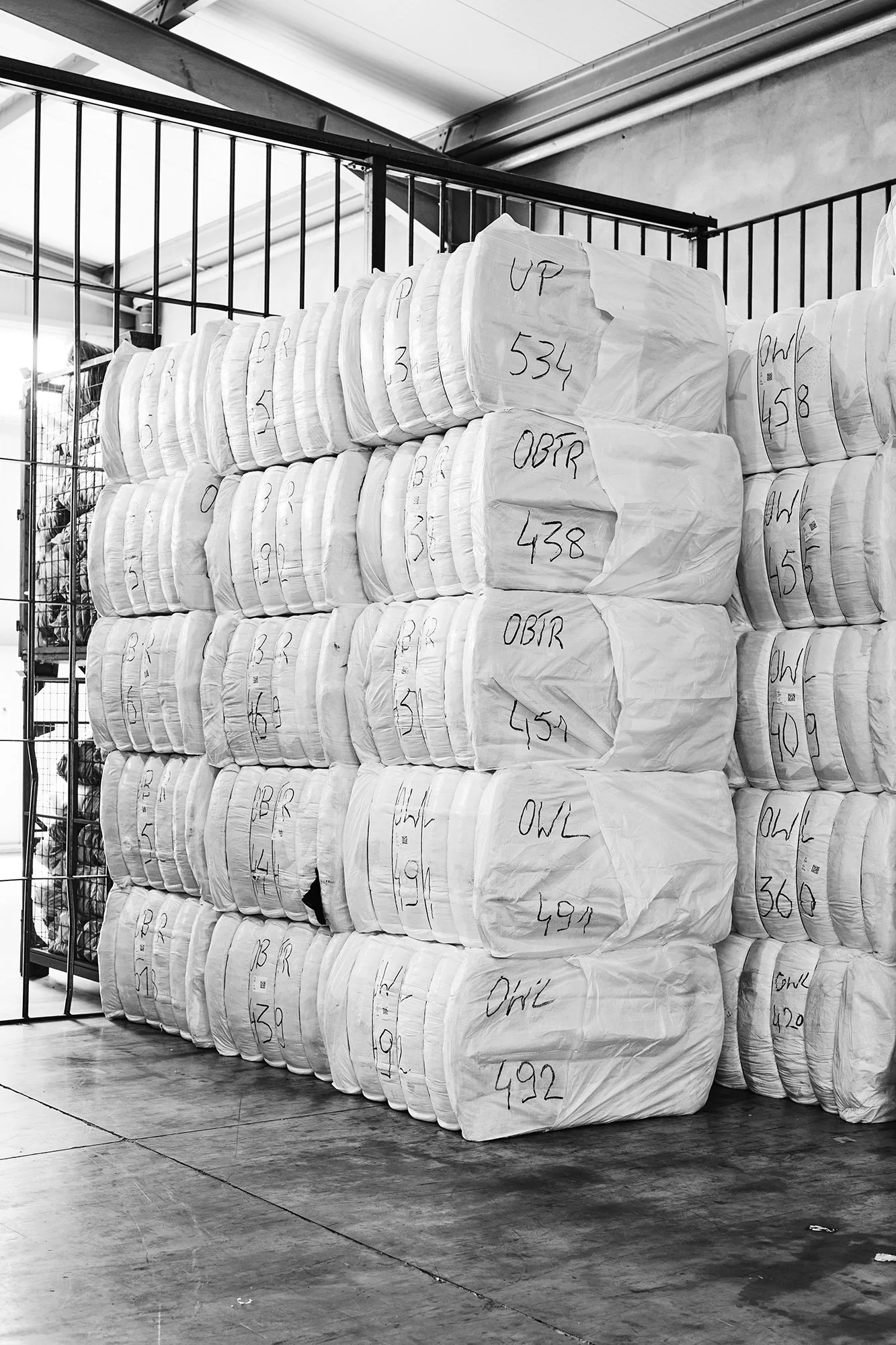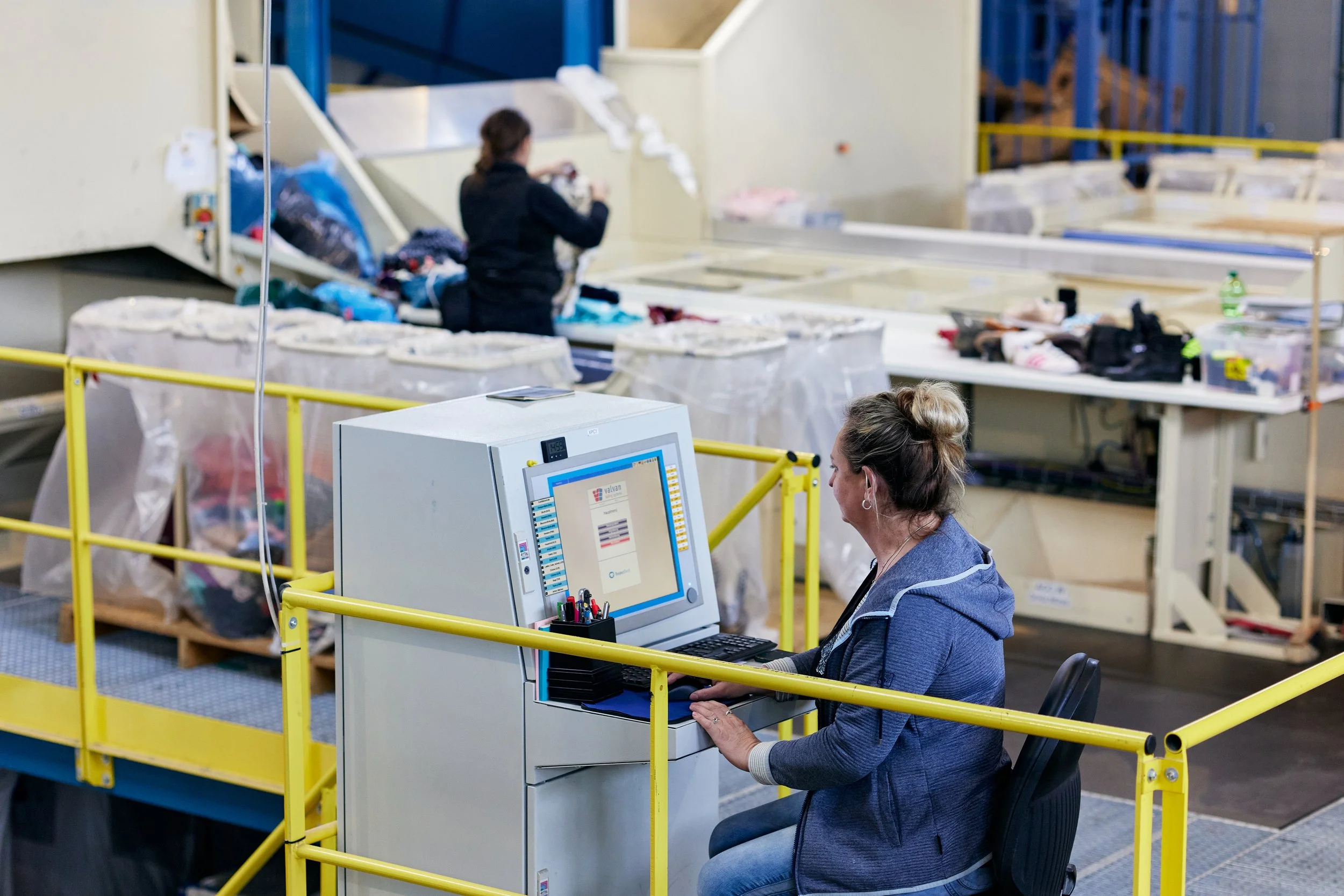
Where do your garments go? Here’s how we collect and sort used textiles— where they go next, with the goal of extending their useful life.
Our Approach
1. Our first step is to put garments into categories—so that expert sorters in each category can assess textiles based on condition, style, and material.
At this pre-sorting stage, garments are classified into 30 general categories—jackets, T-shirts, jeans, items for recycling, responsible disposal, etc.
2. We follow the EU Waste Hierarchy
Each item is assessed individually based on condition and then placed in the most environmentally beneficial next use category following the EU Waste Hierarchy, which states that reusing should be prioritized before recycling whenever possible.
3. Finer Sorting…
Piece by piece, we sort into more than 300 specific categories to maximize the likelihood of each textile reaching a suitable end state based on its conditions and characteristics.
4. Reuse. Recycling. Responsible Disposal
Garments continue their life cycle in new markets. Textiles in good condition are carefully sorted for second-hand use and sold to reuse businesses around the world where there is demand.
Items not suitable for reuse are sorted and prepared for recycling. While a small share is sent to partners for textile-to-textile recycling, the majority is redirected into other applications—such as textile wipers, insulation, or automotive stuffing.
Whenever reuse or recycling is not possible—due to contamination or severe damage, textiles are disposed of responsibly in established waste facilities, prioritizing incineration for energy recovery where possible.
5. Tracking Textiles for Visibility
While there is currently no feasible solution to track tens of millions of garments piece by piece to the customer who ultimately wears them, we track our sales flows on an aggregated basis. This allows us to gain insight into first-tier sales, where tracking is currently possible.
We carry out on-the-ground “deep dives” in key markets across Africa, Europe, Asia, and the Americas to understand which categories of garments align best with different end customers, and build direct relationships with second-hand businesses who buy sorted textiles.
These local “deep dives” help us see how textiles are reused, recycled, or resold, while allowing us to work with local stakeholders to identify challenges and opportunities for improving garment end state and visibility.
6. Driving Responsible Solutions Beyond Compliance
Strong legislation on waste handling and producer responsibility is essential for driving systemic change across the fashion industry. That’s why we actively collaborate with policy advocates and like-minded partners to push progress forward, together.
In our reuse and recycling streams, our work extends beyond meeting today’s regulations. We are preparing for tomorrow’s reality: supporting extended producer responsibility (EPR), closing data gaps with visibility tools, and demonstrating that textile collection and sorting can be done responsibly, and at scale.
7. Operational Excellence + Optimal Brand Protection
We are building the infrastructure to enable circular textiles.
Our operations are designed to maximize collection and sorting efficiency at scale. At our main facility in Germany, we use near-infrared (NIR) technology and optical sensors to quickly and accurately identify textile composition, allowing us to deliver feedstock that meets textile-to-textile recyclers’ specifications.
In our “Leftovers” business stream, we handle items such as returns, stopped orders, damaged products, write-offs, campaign and license items, hardware, and home textiles. All products are managed through secure retail channels in brand-approved countries, or directed into secure recycling and disposal for licensed goods—in line with agreed terms and conditions. We provide year-end reporting and audit our own facilities and affiliates to ensure accountability and brand protection at every step.









